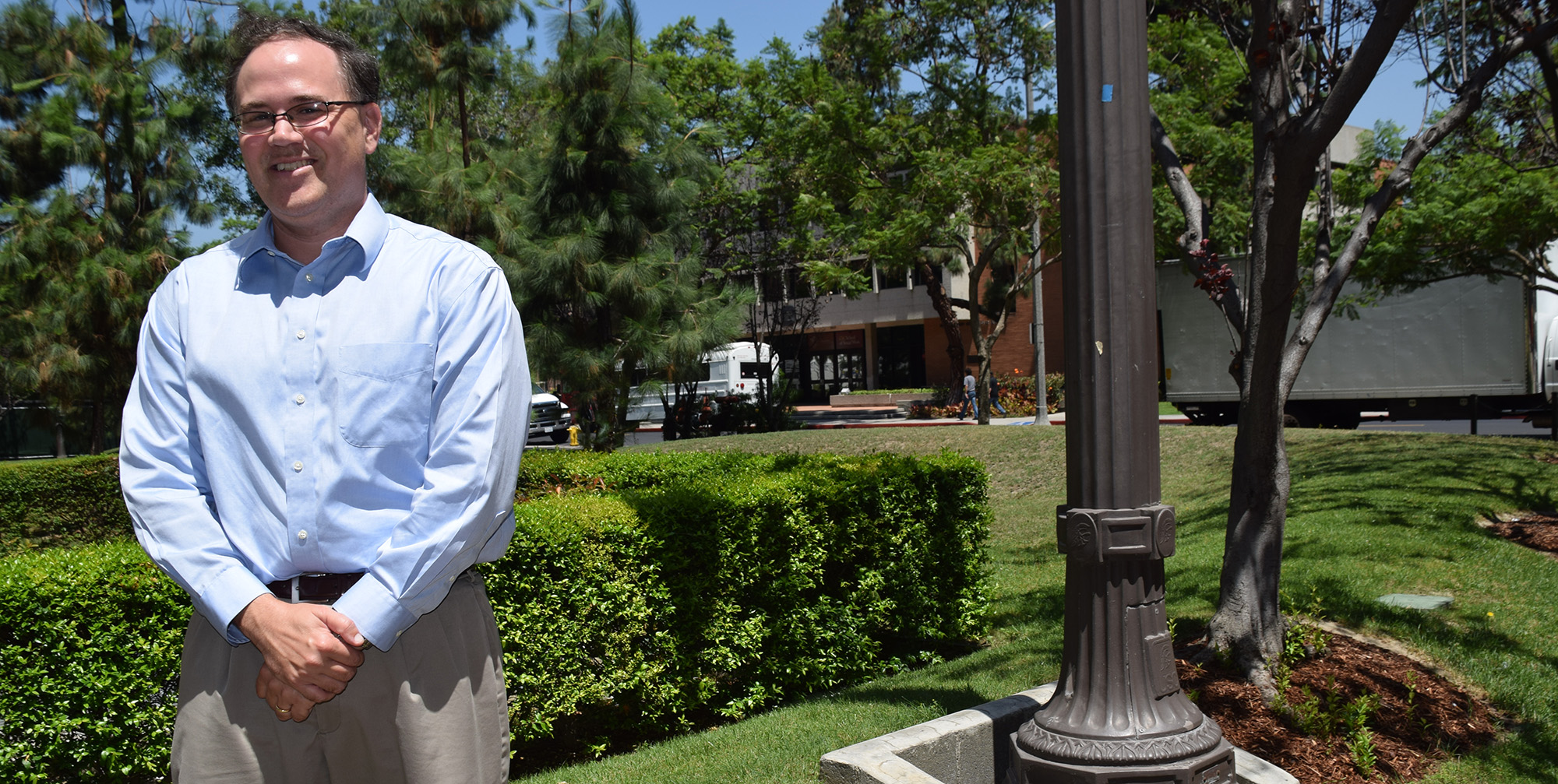Texas A&M Teaching Fellow Adam R. Seipp Conducts Research at USC Shoah Foundation

USC Shoah Foundation’s first Texas A&M Teaching Fellow Adam R. Seipp got to do something he doesn’t often get the opportunity to do: work uninterrupted in the Visual History Archive and fully focus on his passion for testimony for a whole week.
Seipp has been in residence at USC Shoah Foundation in Los Angeles for the past week, meeting with staff and conducting research in the Visual History Archive. The Texas A&M Teaching Fellowship, funded by the A.I. and Manet Schepps Foundation, provides summer support for one member of the Texas A&M University faculty each year for the next three years to integrate USC Shoah Foundation’s testimonies into new or existing courses.
Students in Seipp’s course next year will investigate different aspects of the final death march out of Dachau in spring 1945, drawing on the 26 testimonies of survivors of that march in the Visual History Archive.
On Thursday, Seipp gave a lecture to staff about his research of the Dachau death marches and liberation. He noted that historians have not devoted much study to the experiences of survivors who were liberated on roads, villages and countryside, not within the camp itself. He also described the controversy of the 522nd Field Artillery Battalion, an all-Japanese American unit that was involved in the liberation of some Dachau prisoners.
Seipp said being at USC Shoah Foundation this week has been a terrific opportunity. He has met with Institute staff about possible partnerships and collaboration at Texas A&M and even gotten a sneak peek at the testimonies from Jewish Family and Children’s Services (JFCS)’s collection in San Francisco that have not yet been integrated into the Visual History Archive.
Though he has already researched the Dachau death marches and liberation extensively, he even managed to find a testimony he had never watched before. It’s the testimony of Zvi Griliches, a Dachau survivor when went on to become an economics professor at Harvard and even advised some of Seipp’s colleagues at Texas A&M. Seipp had read about his story before, but found it especially interesting to get to watch his testimony as well.
“The chance to listen to him and watch him in addition to this printed testimony that had been one of the starting points of this project was tremendously exciting. The testimony is really quite moving,” Seipp said.
Since he first began using the archive about six years ago, Seipp said it has become more user-friendly and easier to access, which encourages more faculty and students to use it. He’s also witnessed what happens when students are exposed to testimony.
For example, some of his students, so enamored of one Norwegian survivor after watching his testimony, found the nearly 100 year old on Facebook and became friends with him. Another student said Seipp’s class had made her excited to be a history teacher.
“The way the VHA challenges what students think not just about the Holocaust but what they think about how we learn about history is, for me, the great reward of using testimonies,” Seipp said. “It makes them think about the Holocaust not as a black box in which horrible things happened but as an aggregation of thousands and millions of individual stories. It changes how they think about nature of evidence and what historians do. It’s just enormously rewarding.”
Thanks to the Visual History Archive, the A.I. and Manet Schepps Foundation, and a core group of dedicated faculty, Texas A&M is becoming known as a hub for Holocaust research and study, Seipp said. He and his colleagues believe the Holocaust is critically important for students to study not only in and of itself, but because it helps them understand the world in a more sophisticated way and become informed, global citizens. It can be a jumping-off point for students to become passionate about any number of important issues.
“It’s a door through which we can help students think about critical issues from a variety of disciplinary perspectives. It becomes the starting point for a conversation about a lot of issues that are very much with us today, and done in a way that encourages students to think broadly across disciplines in the humanities,” Seipp said. “I always tell students, ‘If you can’t be passionate about this, what can you be passionate about?’”
Like this article? Get our e-newsletter.
Be the first to learn about new articles and personal stories like the one you've just read.